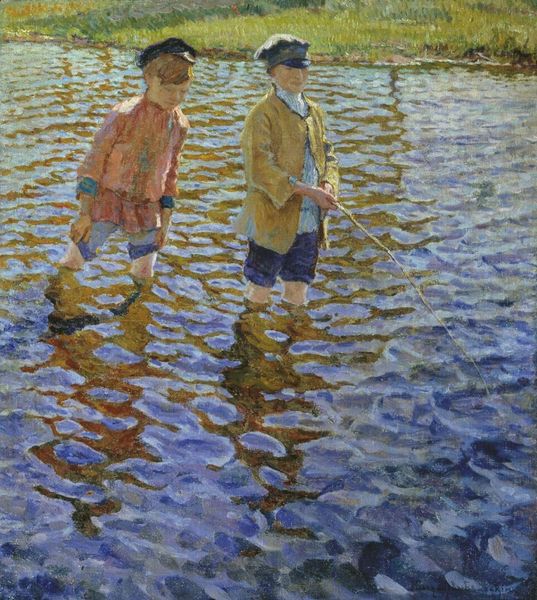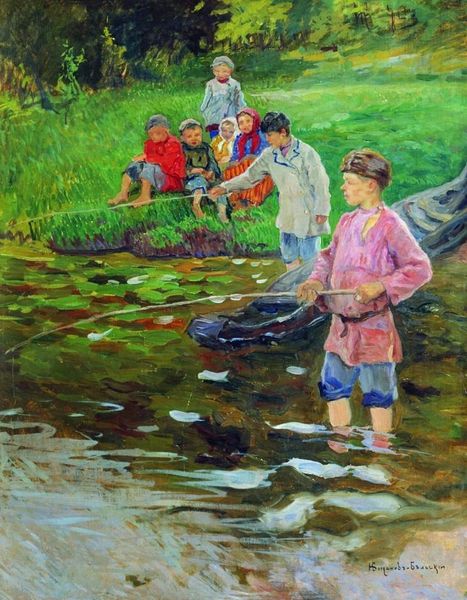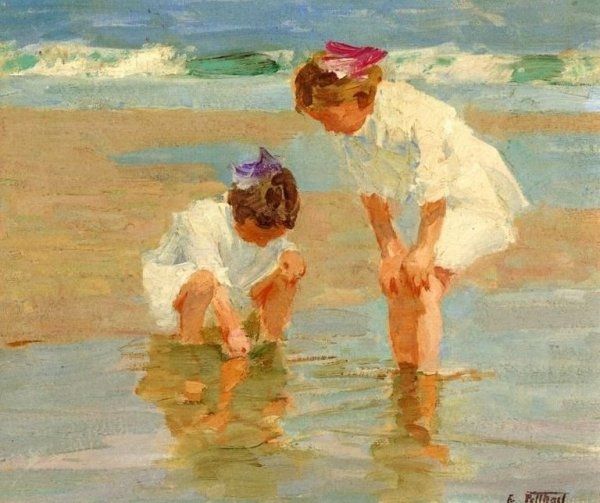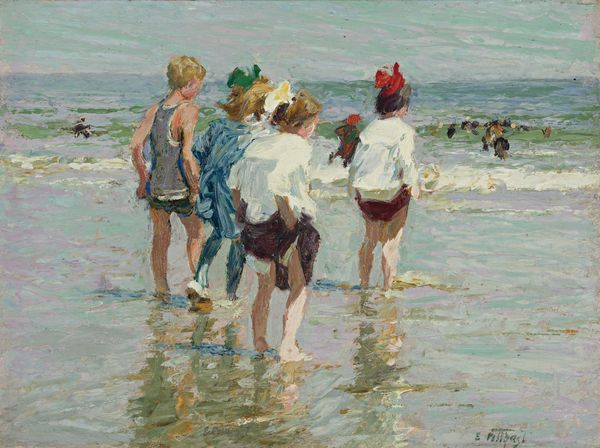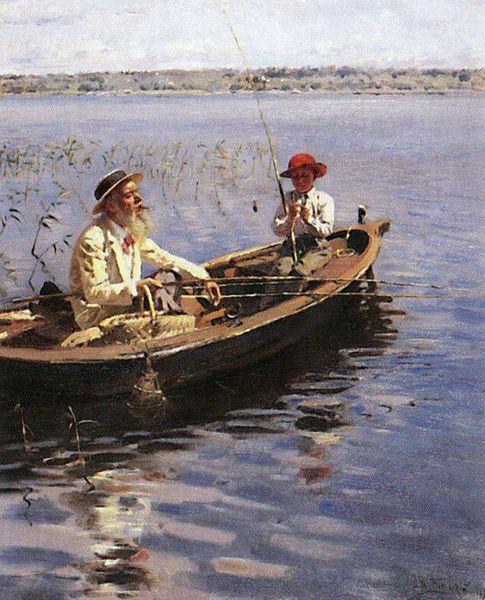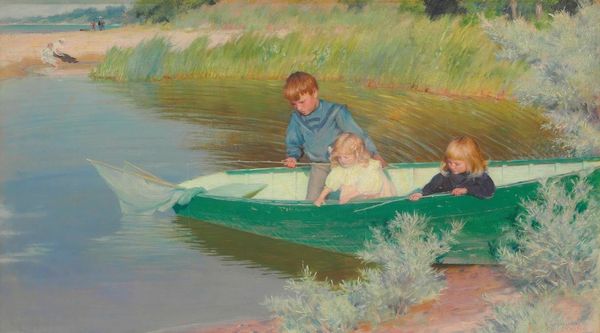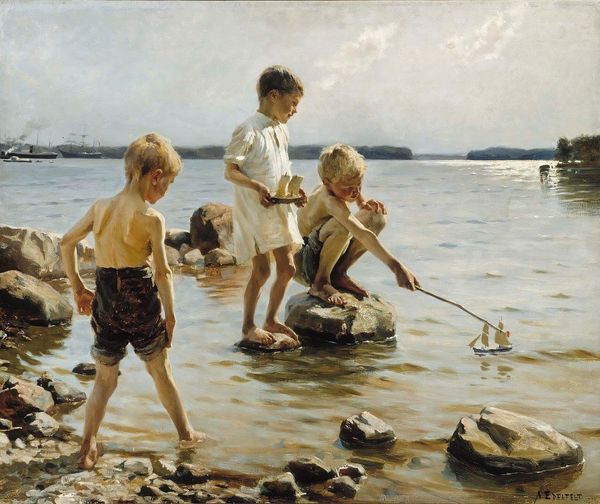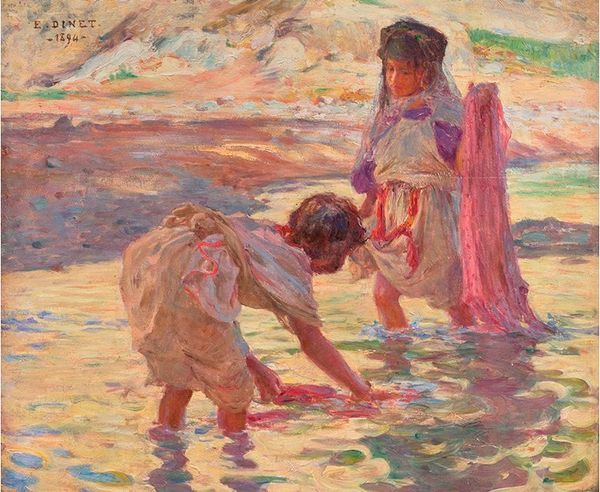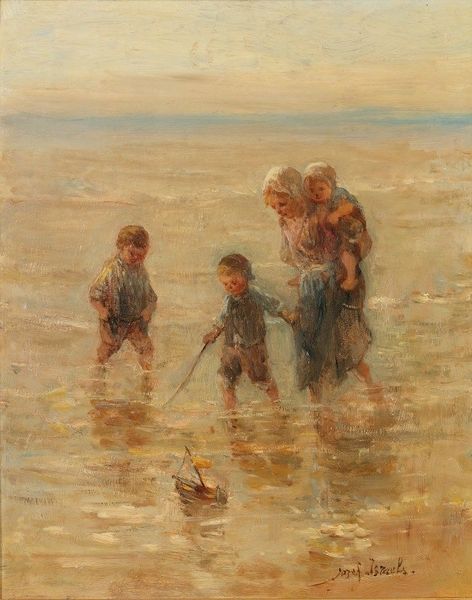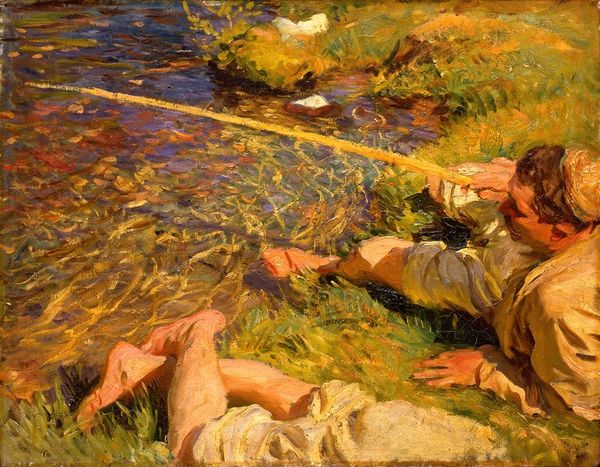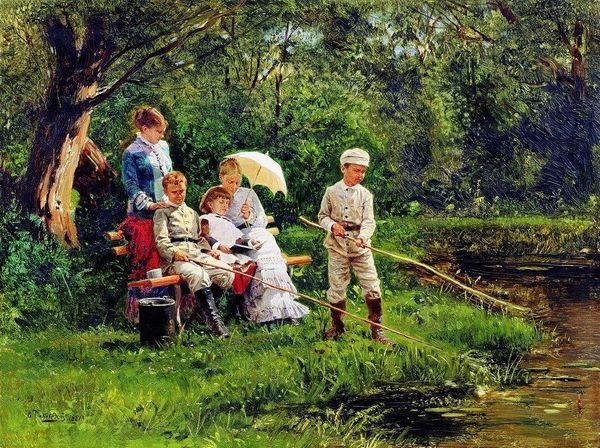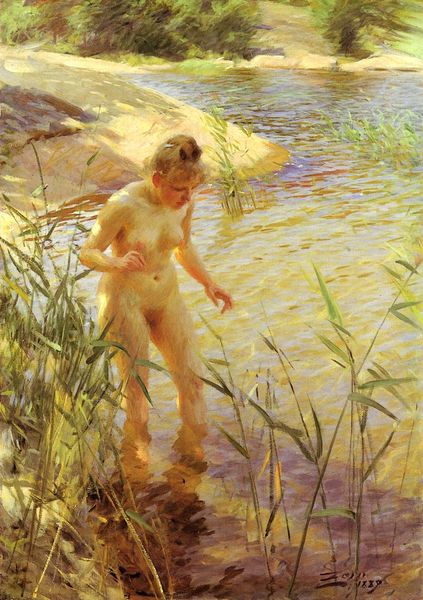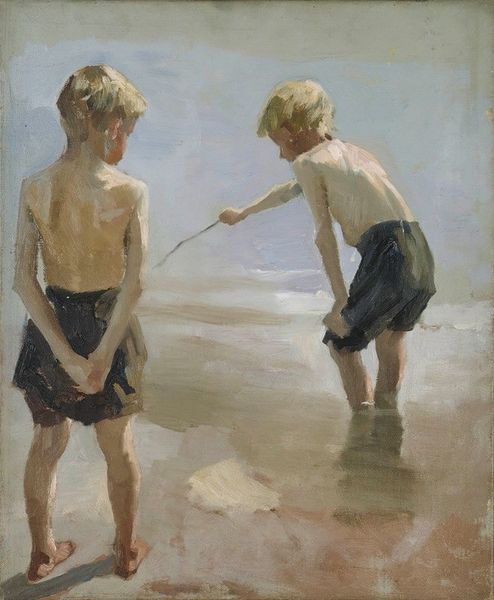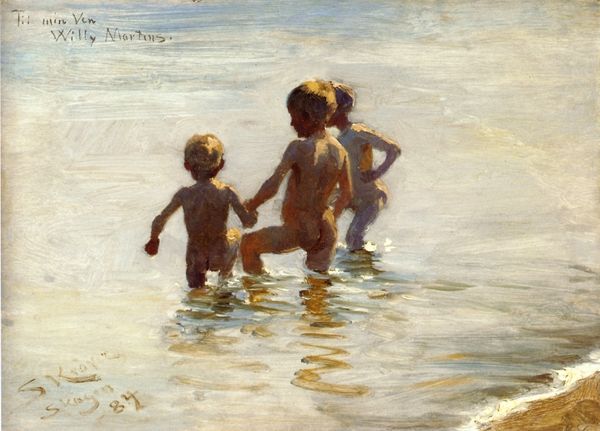
Dimensions: 101.6 x 129 cm
Copyright: Public domain
Editor: Here we have Nikolay Bogdanov-Belsky's "An Afternoon Fishing," created in 1917 using oil paints in a plein-air style. There's a palpable feeling of summer, sunlight, and carefree childhood. What jumps out at you about this piece? Curator: Beyond its aesthetic charm, what I see here is a window into a very specific socio-cultural moment. Genre paintings like these, especially depicting peasant life, served a particular function. Consider, for example, the rise of social realism around this time and how artists were tasked with portraying the everyday lives of ordinary people. How might this painting fit into or perhaps resist such trends? Editor: It’s interesting you mention that. I immediately think of its impressionistic qualities, like the shimmering light on the water. How does the painting's style play into its social commentary? Curator: Exactly! The impressionistic brushstrokes soften any stark realism, almost romanticizing the scene. Is it a truthful depiction, or an idealized vision created for a specific audience, perhaps the urban elite? These images often functioned as a bridge—or perhaps a barrier—between different social classes. Was this artist’s intention to depict the honest working class or to create a stylized consumable product for the consumption of a bourgeoisie audience? Editor: That makes me consider how it's displayed. Would its meaning shift depending on whether it’s shown in a public museum versus a private collection? Curator: Absolutely. Museums legitimize and canonize art. Displaying this work in a prominent museum gives it an entirely different weight than seeing it in someone’s home. We, as curators, shape how the public understands the piece and its context. Where it hangs changes how it speaks. Editor: That's something I’ll definitely consider when viewing art from now on. I learned a lot from our discussion. Curator: And I’m glad to offer a different perspective. Reflecting on these aspects deepens the richness and experience of engaging with the painting and allows a conversation with our culture’s past to begin.
Comments
No comments
Be the first to comment and join the conversation on the ultimate creative platform.
